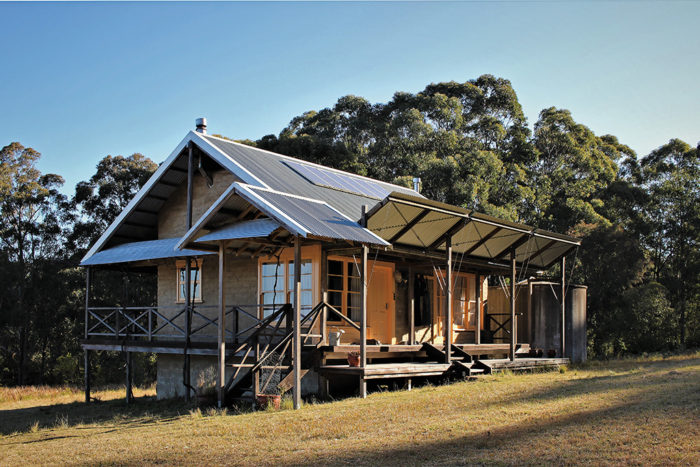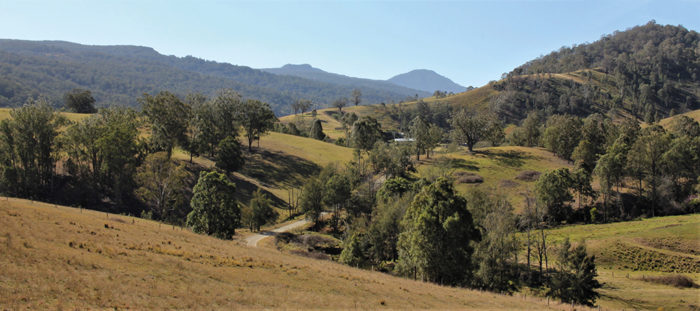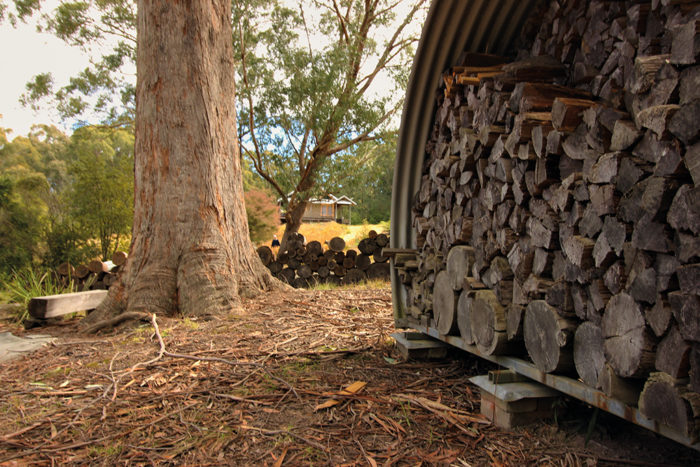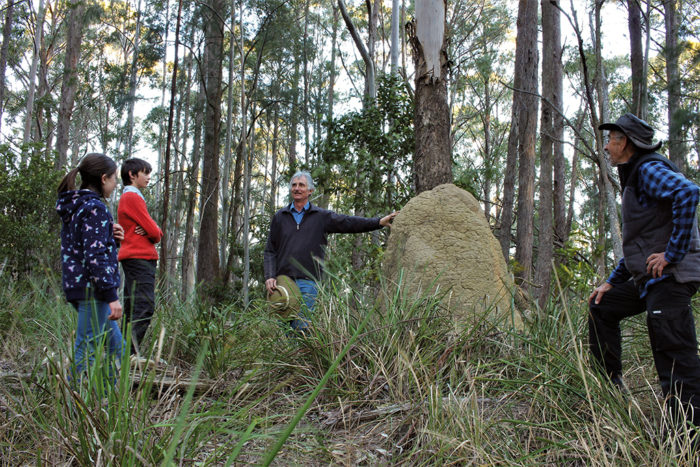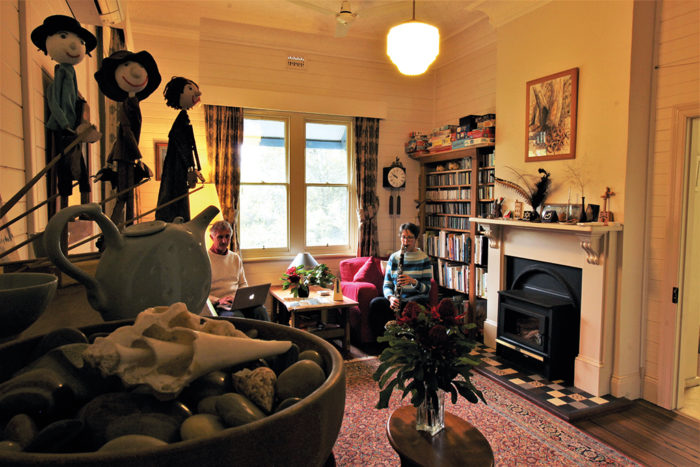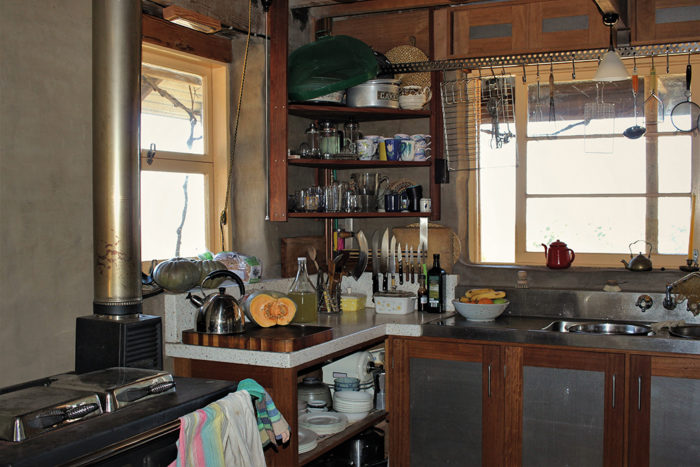
The footprint of Martin Fallding
I meet Martin Fallding at the gate of his forty-hectare property high in the hills above Singleton.
Not so long ago this was mostly cleared land, but now the trees are creeping back. An older, grander forest rises behind us, up into the mountains and plateaux of Mount Royal and the Barrington Tops. It is fifty kilometres to the nearest shop; but Martin seems at home up here. Standing still is not Martin’s forte. He is preparing for guests in his family’s ‘retreat’ cottages on Callicoma Hill – cottages that run on sunshine and firewood.
The simple timber buildings look south over the Hunter Valley and Glennies Creek, dammed to form Lake St Clair. The view is flanked by forest and graced by wallabies. The two cottages were rebuilt here after an earlier life as government-owned construction quarters. Martin painstakingly ‘repurposed’ these simple timber dwellings. Today they are positioned across the natural slope of the land, oriented for optimum placement of solar panels. They are insulated and attractively painted. Heating, and hot water too, comes from a wood-burning stove and a slow-combustion fire. Except for the photovoltaics it could be back in the 1950s….
Martin works part-time as an environmental planning specialist. He is an active member of community organisations. Under another hat he is a freelance consultant on land management. He has government advisory responsibilities in Sydney. And now and then around the district he plays concertina in a bush band. His life, I come to understand, is more than a little complicated. We are on the edge of the wilderness and Martin talks about trains – his favoured means of travel to Newcastle and Sydney. He is passionate about the future of public transport and is quietly urging for more frequent services to Singleton and the Upper Hunter. He is not one for noisy protests: he progresses his causes working methodically within the system. Martin is also a dedicated bushwalker.
Over decades he has built up an intimate knowledge of the tracks and peaks of the Barrington Tops. Ludwig Leichhardt explored this area in the 1840s and Martin has researched in detail his journeys. He has identified Leichhardt’s routes and revisited them himself, sometimes, like Leichhardt, alone.
Photography and story by Ken Rubeli
Read more in the Winter issue of Hunter&Coastal Lifestyle Magazine or subscribe here.

